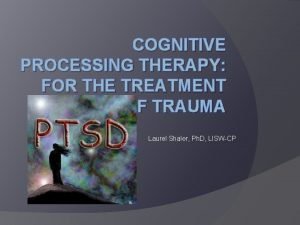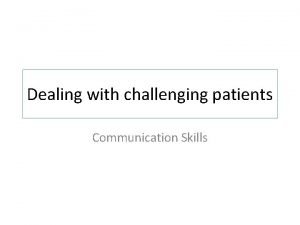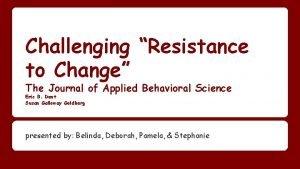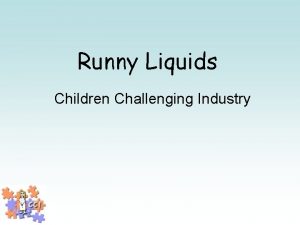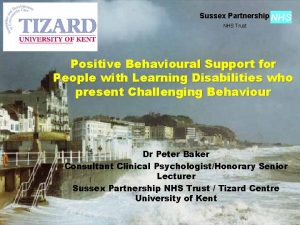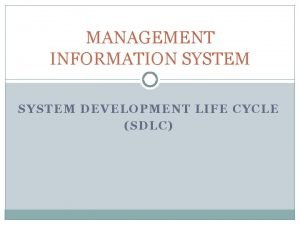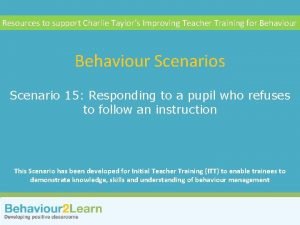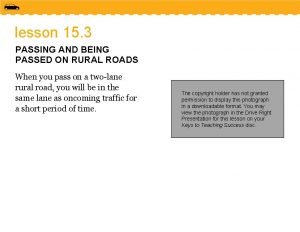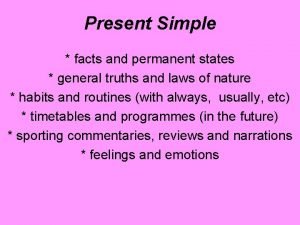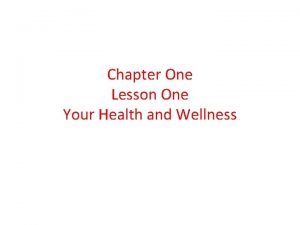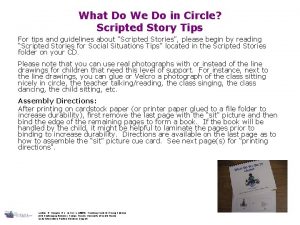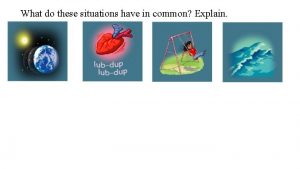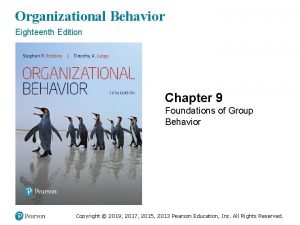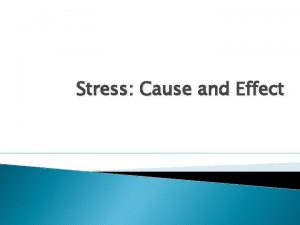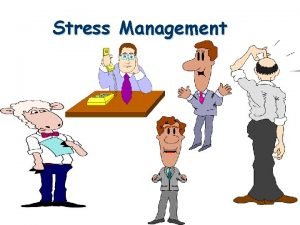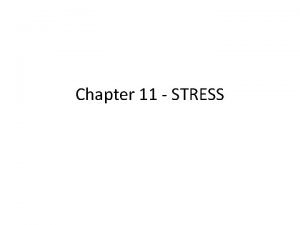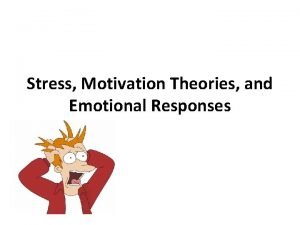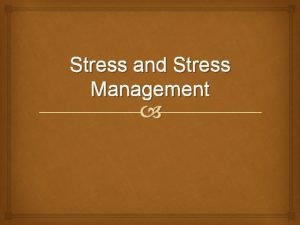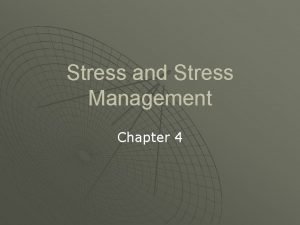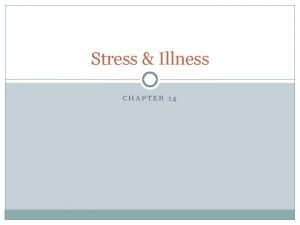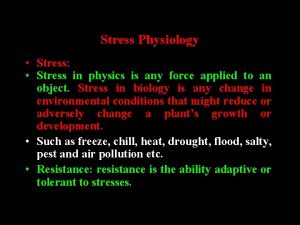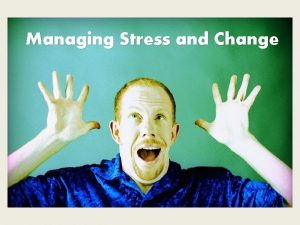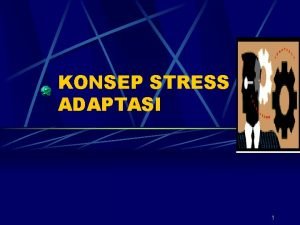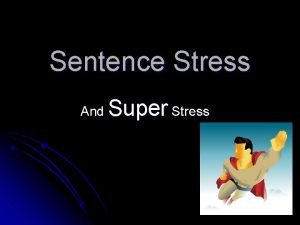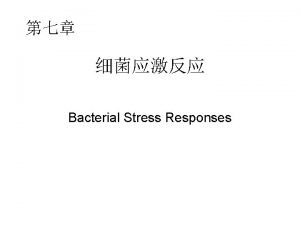Challenging Situations Challenging Situations Stress Challenging situations cause































- Slides: 31

Challenging Situations

Challenging Situations = Stress • Challenging situations cause stress in a child’s life. • Stress results from changes in a routine, good or bad. • Examples: Handicaps, new baby, starting school, grief, death, divorce, illness or moving.

Signs of Stress • • Biting Crying Power Struggles Excessive attachment Fears Eating problems Increased sensitivity

Childhood Feelings • Children usually understand what is going on. • Tell children the truth in a calm and reassuring way. No need to include everything, but enough. • Allow children to talk about their feelings. • Children need more help and support through issues than adults. • Support may need to come from an adult that is not involved in the stressful situation.

Coping Strategies for Children • • Daily exercise or movement Eating nutritiously Having leisure time Enjoying hobbies Adequate sleep Relaxation methods Talking about feelings

Children Grieving • Grieving is not just for losing a loved one. • Children can go through the stages of grief for anyone or anything. • Examples: – Lost blanket or stuffed animal – Moving to a new house – Divorce of parents

Stages of Grieving • Denial – Feelings of shock • Anger – Blame someone or something for what they did to cause this. • Guilt – Blame oneself for something they did in the last few months to cause this.

Stages of Grieving • Bargaining – With other people or with God to not let it happen • Acceptance – Coming to terms, moving on, adjusting to the change.

Knowing Ahead of Time • Children sense the change in actions and the tension associated with the situation. • Tell the children about the situation so they have time to adjust to the events it will bring. • Examples: – Financial challenges – Illnesses – Moving situations

Divorce • Reassure the child that they are still loved by both parents. • The child should not be blamed for the divorce. • Maintain as much stability in the child’s life as possible. (same school, same home, same routines, etc. )

Divorce • Provide continuity in the child’s daily schedule and situation. • Children often believe that their parents will get back together again. • Parents should never belittle/bad mouth one another in front of the kids.

Effects of Divorce on Children • Preschoolers (ages 2 -5 years old) – Major Theme • Fear of abandonment – Symptoms • Sleep disturbances – What to do • Explain that custodial parent will always return

Effects of Divorce on Children • Young Childhood (ages 5 -9 years old) – Major Theme • Fear of being displaced – Symptoms • School and social grief – What to do • Discuss fears

Effects of Divorce on Children • Adolescence (ages 12 -18 years old) – Major Theme • Fear of own relationship failure – Symptoms • Independence, promiscuous – What to do • Communicate

Death • Children dealing with death feel grief and need to express it. • Help children understand that they will not die just because someone else has. • Reassure children by being specific about when you will return whenever you leave. • Teach a child about death before the child is confronted with the death of a loved one.

Death • Under the age of 3 – Children think of death as if the person has gone on a short vacation. – Believe that person will be back. – Death does not seem permanent to them.

Effects of Death on Children • Early Childhood (ages 2 -5 years old) – Think it’s reversible and that the person comes back (video game mentality). – Think little kids can’t die. – Egocentric (they caused it). – Don’t understand forever. – Fear of abandonment.

Effects of Death on Children • Middle Childhood (ages 6 -12 years old) – Understand physical death causes (gun, attack, illness) – Think that death is irreversible – Think death is only for old, sick and careless people – Still egocentric (won’t happen to me) – Intrigued by details of death

Effects of Death on Children • Adolescence (ages 12 -18 years old) – Natural for all people – Death results in bodily deterioration – Feelings of invincibility (it won’t happen to me) – Visualize being old or sick and dying – Develops morals and values about death

Fears • Respect the fears of the child and do not belittle the child over them. • Children tend to be most fearful between the ages of 2 -7 years. • They have an active imagination and cannot yet discriminate between real and unreal dangers. • Help the child overcome the fears • Be understanding and comforting

Overcoming Fears • Using the following techniques will allow the child to deal with and talk about fears more freely: – Make-believe play. Act out the fearful situations. – Draw pictures of the fear.

Abuse • Child abuse is anything that intentionally is aimed to hurt or harm a child. • Most child abuse is done by people the child knows and trusts.

Why Does Abuse Happen? • The adult was abused as a child and so they are just repeating what was done to them. • The adult does not know of any other methods for discipline or having a knowledge of appropriate child expectations. • The adult is stressed and has reached their coping threshold so they take this out on the child.

Why Does Abuse Happen? • Children with physical and mental disabilities are at risk for abuse. • Teens, parents, immature parents, single parents, parents involved in alcohol and drugs, and parents living in poverty are more likely to be abusers.

Emotional and Verbal Abuse • Rejecting children • Belittling them • Blaming them or constantly scolding them, particularly for problems beyond their control

Physical Abuse • • • Intentionally causing injury to a child. Hitting Shaking Burning Biting

Sexual Abuse • Includes any inappropriate sexual behavior with a child • Touching • Taking photographs • Inappropriate discussions

Neglect Abuse • Failing to provide for a child’s basic needs • Can be both physical and emotional • Examples include: food, water, shelter, clothing, love, attention and medical.

Reporting Abuse • Utah is a mandated reporter state. • It is required by law to report any maltreatment. • All reports are kept anonymous.

Where to Find Help? • To report child abuse, contact: – Child protective services – DCFS (Department for children, schools and families) – Local law enforcement

Summary • All children face challenging situations throughout their lives. • Those may include stress, grieving, divorce, death, fear or abuse. • Know how to help a child during those difficult times that will come.
 Stress caused by an unpleasant situation is
Stress caused by an unpleasant situation is Normal axial stress
Normal axial stress Chapter 10 stress responses and stress management
Chapter 10 stress responses and stress management True stress vs engineering stress
True stress vs engineering stress Proximate cause and ultimate cause
Proximate cause and ultimate cause Proximate causation vs ultimate causation
Proximate causation vs ultimate causation Learned behavior biology
Learned behavior biology Underlying cause and immediate cause
Underlying cause and immediate cause Examples of challenge
Examples of challenge Feasibility study in system development life cycle
Feasibility study in system development life cycle Cpt trust star worksheet
Cpt trust star worksheet Exciting, boring, dangerous, safe, interesting, challenging
Exciting, boring, dangerous, safe, interesting, challenging Dealing with challenging patients
Dealing with challenging patients Challenging resistance to change
Challenging resistance to change Children challenging industry
Children challenging industry Time intensity model challenging behaviour
Time intensity model challenging behaviour Feasibility study in sdlc
Feasibility study in sdlc Challenging behaviour scenarios
Challenging behaviour scenarios Opposite of periodic sentence
Opposite of periodic sentence What i found challenging
What i found challenging Analisa situasi adalah
Analisa situasi adalah Comic situations examples
Comic situations examples When you are being passed you should
When you are being passed you should Situation initiale exemple
Situation initiale exemple Remember present continuous
Remember present continuous General truths about the past
General truths about the past The way you view situations
The way you view situations Invert the subject and verb with place expressions
Invert the subject and verb with place expressions Was the circle scripted
Was the circle scripted What do they have in common? explain
What do they have in common? explain Simple present remember
Simple present remember Do role requirements change in different situations
Do role requirements change in different situations










